Understanding China through Comics Volume 4 is out! As I have reviewed the other volumes, I was sent a free copy of this one.
This volume deals with the Ming and Qing, and like earlier volumes it is both good and interesting.
The purpose of the volumes is to explain all the things that need to be explained in Chinese history. The series is explicitly aimed at the author’s kids (check out the cover) and it aims to tell the story of China, and give the reader some background on all the things they have or should have heard of. The overall theme is the rise of China and the creation of a middle-class society.
The Ming and Qing will clearly be a tricky period for a project like this. Somewhere in this period China is going to have to start to decline. How to deal with this? How also to deal with the foreigners? He does the latter better than the former.
When explaining history it is good to pick some representative figures and focus on them. The first is the Ming founder, Zhu Yuanzhang. He is really China’s only peasant emperor, and thus he get a lot of play. We get a whole page on how he was born in Fengyang county, which years later would be where peasants spontaneously created the responsibility system making this the starting point of China’s drive to a market economy. So just as Zhu liberated China from the Mongols, so to the people of Fengyang liberated China from Maoism, (Not that he puts it that way.)
Zhu himself is presented as both a bold warrior and a man of the people.
This is somewhat odd, given that Volume Three was quite critical of rulers who ignored or oppressed scholar-officials, and lord knows Zhu Yuanzhang did that. Instead, his dislike for the traditional elite is portrayed as concern for the poor and he is praised for his willingness to stick it to the rich. Unfortunately this paragon died from the exhausting work of trying to keep China’s corrupt officials under control.
The problem with the Ming, ultimately, was that unlike the Song, it was a passive dynasty that was not “active at the forefront of development” thus “resulting in a natural economy dominated by small-scale agriculture.”
(Liu is getting to be more visual in his presentation, but there are still clunker panels like this.) This does not square well with a lot of recent work on the Ming, which sees it as a period of rapid commercial expansion. Liu talks a lot about the fiscal problems of the Late Ming. The chief problem is lack of an effective tax system and, again, inability to control the wealthy and corrupt. This seems to be a common theme of pretty much all Chinese history for him.
We do get a couple more heroes. Wang Yangming, the Confucian philosopher and inspirer of 3 of the 4 great classical novels. (Nice twofer there.) We also get Hai Rui, the famous honest official.
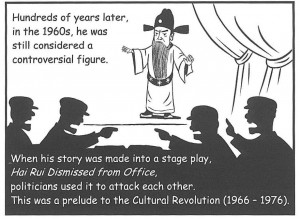
Hui Rui is worth mentioning partially because he throws Ming corruption into clear relief and also because he will become important later. In the 20th century when a play was made about him “politicians used it to attack each other. This was a prelude to the Cultural Revolution.”
The Qing is portrayed quite favorably. The Manchus adopted to Chinese culture (no multi-ethnic empire here) and China grew rapidly.
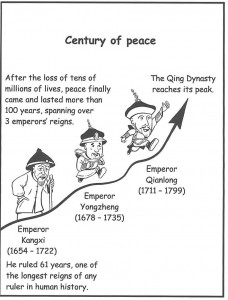
A lot of the economic growth stuff that might have been better placed back in the Ming, like New World crops, ends up in the Qing.
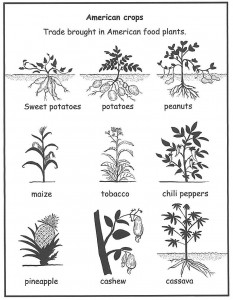
He has a lot of cool technological and social change stuff in here, but he always seems to imply that the changes were driven by the policy choices of a developmental state. This of course was not true. While there was plenty of economic progress in the Ming and Qing they did not have modern governments trying to encourage such things any more than the Han or the Song did.
The foreigners are of course problematic, and he deals with them well.
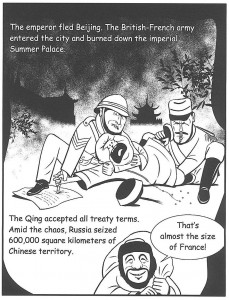
We do of course get the opium trade and the unequal treaties, although I can imagine much more anti-foreign treatments of this. Liu has the problem of explaining what went wrong with China. It was certainly not that the Qing was hopelessly corrupt and backward. Zeng Guofan and Li Hongzhang are both treated positively.
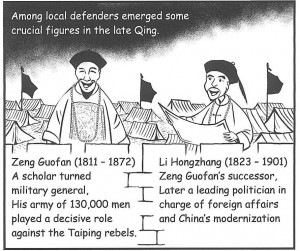
Nor is it that the foreigners are all evil creatures of great evil evilness. The Japanese are treated pretty respectfully, and the hero of modernization is Phillo Norton McGiffin, the American naval officer who worked for China and fought at the battle of the Yalu.
Here he is in the book
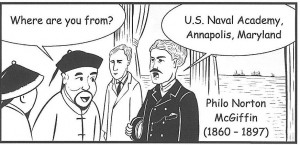
Here he is before and after the battle.
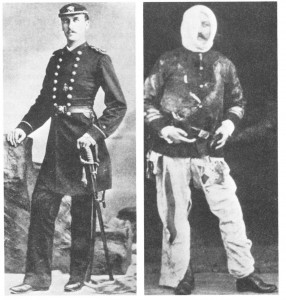
Some comic artists like Art Speigelman will occasionally drop a photograph into the text, and this would be a good choice for that.
The real cause of China’s defeat, according the McGiffin was their lack of learning the modern knowledge he wanted to teach them and their outright cowardice in battle. The Battle of the Yalu has some of the most dramatic visuals of the whole series, and I wonder if Liu has been looking at the many Japanese prints of the battle.
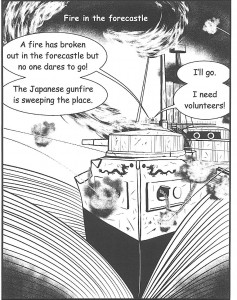
Liu is rather critical of the upper class Chinese who served as officers in the Navy but failed to defend China or to do anything but worry about themselves. The elite takes another beating in the Boxer uprising. The Boxers are an interesting case for Liu. You could use them to show how annoying missionaries are, but Liu treats missionaries pretty well in this book. (They are after all, spreading foreign knowledge, which is good.) You could emphasize the revolutionary potential of the aroused Chinese peasantry, or the suffering of ordinary Chinese at the hands of the foreign armies, but neither of those are really his style. Instead he blames the whole thing on members of the traditional elite who are trying to stir up trouble by riling up the naive peasants.
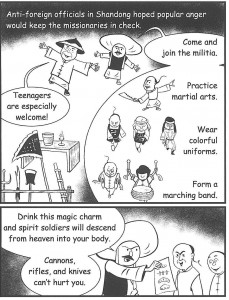
It will be interesting to see what a volume 5 will be like, if there is one. Liu seems to see Chinese history as primarily a matter of the elite. When they are good, China is good. When their strong tendency to be greedy and self-serving takes over things go wrong. I’m not sure how well this will work for the Twentieth century, but it will be interesting to see.
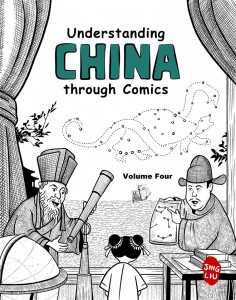

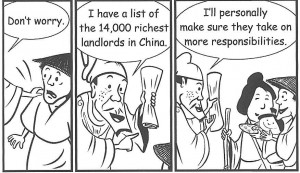
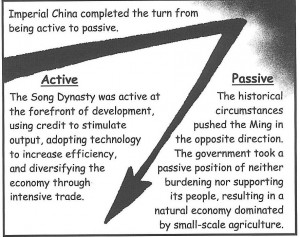
2 Comments